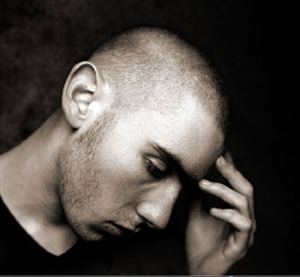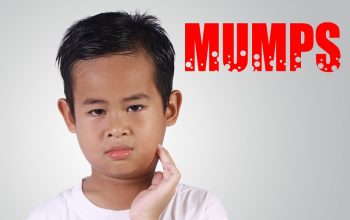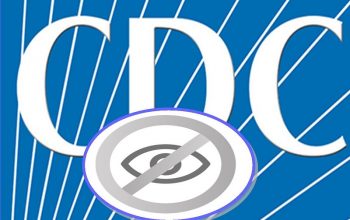Influenza is a disease. Diabetes is a disorder. Irritable Bowel is a syndrome. Depression and other forms of psychological suffering are none of these. It is a mistake to medicalize them.
Diagnostic systems like DSM and ICD at best provide summary shortcut descriptions. They do not explain anything. To “qualify for a diagnosis” of depression, you need to experience at least 5 of 9 symptoms such as feeling sad much of the time, diminished pleasure in your activities, eating and sleep disturbances, low energy, feelings of worthlessness, etc. So, how do you know that I am depressed? Because, among other things, I have low energy. Why do I have low energy? Because I am depressed. That is, using the label as explanation is circular.
So, depression is not a “thing” or entity. It is a way of doing things on a sustained basis; a constellation of habits of emotion and mood.
There are other such constellations of habits. For example, past experience may have taught me to expect danger, discrimination, and persecution to the point that I see this even when others consider a situation to be safe and non-discriminatory. Then I can be dubbed with the label “Delusional Disorder,” the new name for paranoia.
I might have had the kind of childhood in which I was unable to learn how to form loving relationships, how to assess other people and react to them appropriately, so, I needed to invent my own, and these childish reactions became customary. The resulting negative interactions with people then made me feel worthless, faulty, needing to be punished. The set of habits I have developed may fit the diagnostic criteria of “Borderline Personality Disorder,” perhaps the most stigmatized behavior pattern.
On my psychology website I have reproduced with permission the best theory of the causation of depression I have found.
Briefly, each of us has a genetic pattern with strengths and weaknesses. Also, each of us experiences negative events in utero, in infancy and childhood. I inherited genes that predispose me to some of the things that can lead to reacting to events with a low mood (“Depression”), and my early experiences reinforced this. Incidentally, the genetic weakness and infant-learned thinking are usually related. Even when people adopt a baby, somehow they seem to pick one with their own genetic pattern.
Then there is resilience: the ability to survive under pressure and bounce back. This is also determined in part by heredity and in part by early childhood experience, particularly modeling on the reactions of adults to adversity.
So, if you put me under enough environmental pressure, I will respond with feeling depressed. Everyone has a breaking point, determined by current resilience. For example, I had a client with no history of mental illness until 32 years of age. Then his wife left him, and he went to get drunk. He woke up in jail, with no memory of having broken a policeman’s jaw. He had “Bipolar Disorder” from that time on. For me, the relevant event was when I was 5 years old, so I had the depressive behavior pattern from childhood. This is more typical.
Alfredo, my fellow writer, and I have generalized Michael Gathercole’s theory of depression to all forms of emotional suffering. Push any person enough, and there will be a collapse. The precise details will depend on the person’s heredity + childhood experience, but that doesn’t matter that much. One will respond with hallucinations and delusions, a second one with debilitating anxiety, and so on; but that doesn’t mean they have different disorders or diseases. This explains a number of apparently paradoxical findings in psychology. The most important is that a great many therapeutic approaches work about as well as each other.
To make this relevant to the topic of types of depression, all forms of emotional suffering are the result of a complex interaction of “endogenous” and “reactive” factors. With respect to depression, I agree with Wikipedia: “Endogenous depression was initially considered valuable as a means of diagnostic differentiation with reactive depression. While the latter’s onset could be attributed to adverse life events and treated with talk therapy, the former would indicate treatment with antidepressants. Indeed, this view of endogenous depression is at the root of the popular view that mood disorders are a reflection of a ‘chemical imbalance’ in the brain. More recent research has shown that the probability of an endogenous depression patient experiencing an adverse life event prior to a depressive episode is roughly the same as for a reactive depression patient and the efficacy of antidepressant therapy bears no statistical correlation with the patient’s diagnostic classification along this axis. (Watkins, JT; Leber WR, Imber SD, Collins JF, Elkin I, Pilkonis PA, Sotsky SM, Shea MT, Glass DR (1993). “Temporal Course Of Change Of Depression”. Journal of Consulting & Clinical Psychology. 5 61 (858): 64.)”
About the Author
Dr Bob Rich is an Australian psychologist about to retire – a storyteller with 15 published books including 4 award-winners, a professional grandfather, and a lot of other things that are none of your business. His latest novel Ascending Spiral has been getting rave reviews, and you are advised not to start on it unless you have the time to keep reading.





Ernest, I am delighted to be on your blog for the second time. I’ve let my friends know, so I hope they come along and spread the word.
🙂
Bob
It is interesting and unexpected (by me): quite a few people have commented on this essay, but not here. Rather, they have done so in response to my announcement on various venues.
🙂
Bob
I couldn’t agree more on your essay about human emotional states as described by the DSM’s. However, the more that scientific evidence is required to “prove” emotional suffering, the more prescriptive becomes the ‘cure’. Many psychologists need the medico-legal-insurance bureaucracy to keep themselves in business so it is difficult to take a different stance on the protocol as to how to treat the client.
This strikes me as defeatist nonsense to a large degree.
A characteristic of life systems is rhythms of actvity. The stronger the activity, the more marked the rhythm.
In the context of human thought, the greater the creativity, the stronger the rhythm and the less that it might take to upset it.
However, if we see depression as part of a cycle, rather than a destination, it is much easier to weather it and to work through it. We can also see treatment as a process of damping an oscillation, hence slowing the enthusiastic or “manic” phase and slowing the descent into gloom, rather than trying lift the mood overall. This points to “antidressants”as quite inappropriate.
The depressive phase can then be seen as a necessary balance, and a time of cleansing and simplifying, rather than being entirely negative. Most particularly, that mood swings are normal and healthy, but sometimes need a little damping.
Recasting the situation in this way may also help with so-called “Monopolar depression”.
That is not to say that there are not triggers to plunge one into a depressed state. I have perhaps been over-simplifying. Periodontal disease seems to be a strong driver and it may point to specifically Streptococcus, but more generally the balance of bacteria in the body, as strong influences. Because of shared microbiota between close relatives, we cannot be certain whether it is somatic genetics or the resisdent microbiota that generate the familial correlation.
Again, “antidepressants”, although apparently having some effect in this set of circumstances, are a clumsy substitute for management of the resident microbiota. This is often a matter of micronutrients in the diet, rather than a case for antibiotics, or even introductions of “healthy” microoorganisms.
Interesting to try to encapsulate the psychological and biochemical affects and effects in one article. In my experience often judge a depressed or bipolar person as weak and lacking in resiliance for what ever reason. It reinforced the negative stigma if just kick yourself up the backside, show some grit and get over it. Be it clinical depression of the reactive kind differs incredibly from endogenous depression as do therapies, treatments and Wellness regimes.
Of personal interest to me is the anecdotal accounts of creative being more susceptible to either firm but more often correlated with bipolarity. The Kaufman’s book The Dark Side of Creativity would be of interest to readers who find the idea if “life systems as rhythms of activity” intriguing as suggested by John.
Given that BP is not confined to only those who self identify as creative this concept might further develop thinking on possible predictors of cyclothymic changes in mood states, even SADS. So much more work of a qualitative longitudinal nature needs to be done in thus field while the neurologists and biochemists continue mapping the human genuine and various MRI images of brain functioning under ‘distress’ . I want to be a part of thus work post PhD but it would necessitate crossing disciplinary boundaries between humanities, arts and sciences and at present there are zero shared paradigms let slne common academic discourse, sadly.